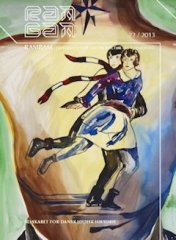Jødisk bogkultur og jødiske biblioteker i Danmark
Resumé
Jewish Culture of the Book and the Jewish Libraries in Denmark
Traditionally, the concept of People of the Book has been attributed to the Jews. The article aims at presenting the most common features of Jewish book culture and library history together with an overview of the Jewish libraries in Denmark in a historical perspective.
The production of the Torah and its private and liturgical use is reviewed. Especially since the destruction of the Second Temple in A.D. 70, the Torah has been crucial to the preservation of a Jewish identity. To the Jews, the Torah has been a “portative native country" as Heinrich Heine has it. The rituals and customs relating to the Torah have had a knock-on effect on Jewish books in general.
A brief account of the history of Jewish libraries since the times of King David is given, including a few examples of medieval and modern attempts to destroy the whole of the written Jewish cultural heritage.
Finally, a summary of the history of Jewish public libraries in Denmark is given: The famous and internationally recognized Bibliotheca Simonseniana, which in 1932 was sold to the Royal Library in Copenhagen; the Toynbee Hall and other types of reading rooms in the beginning of the 20th century specialising in Yiddish literature for the benefit of Jewish immigrants from Eastern Europe, many of whom were non-religious; the libraries in connection with the Jewish Congregation in Copenhagen. Like the Danish Jews, their books were rescued from the Germans in 1943. With the help of non-Jewish Danes, the books were hidden at the Royal Library.
It is concluded that, during history, Jews have shared their lot with their books: Both parts have been censored, persecuted, and attempts have been made to annihilate them. Both parts have had a durable three-thousand-year symbiotic relationship.





